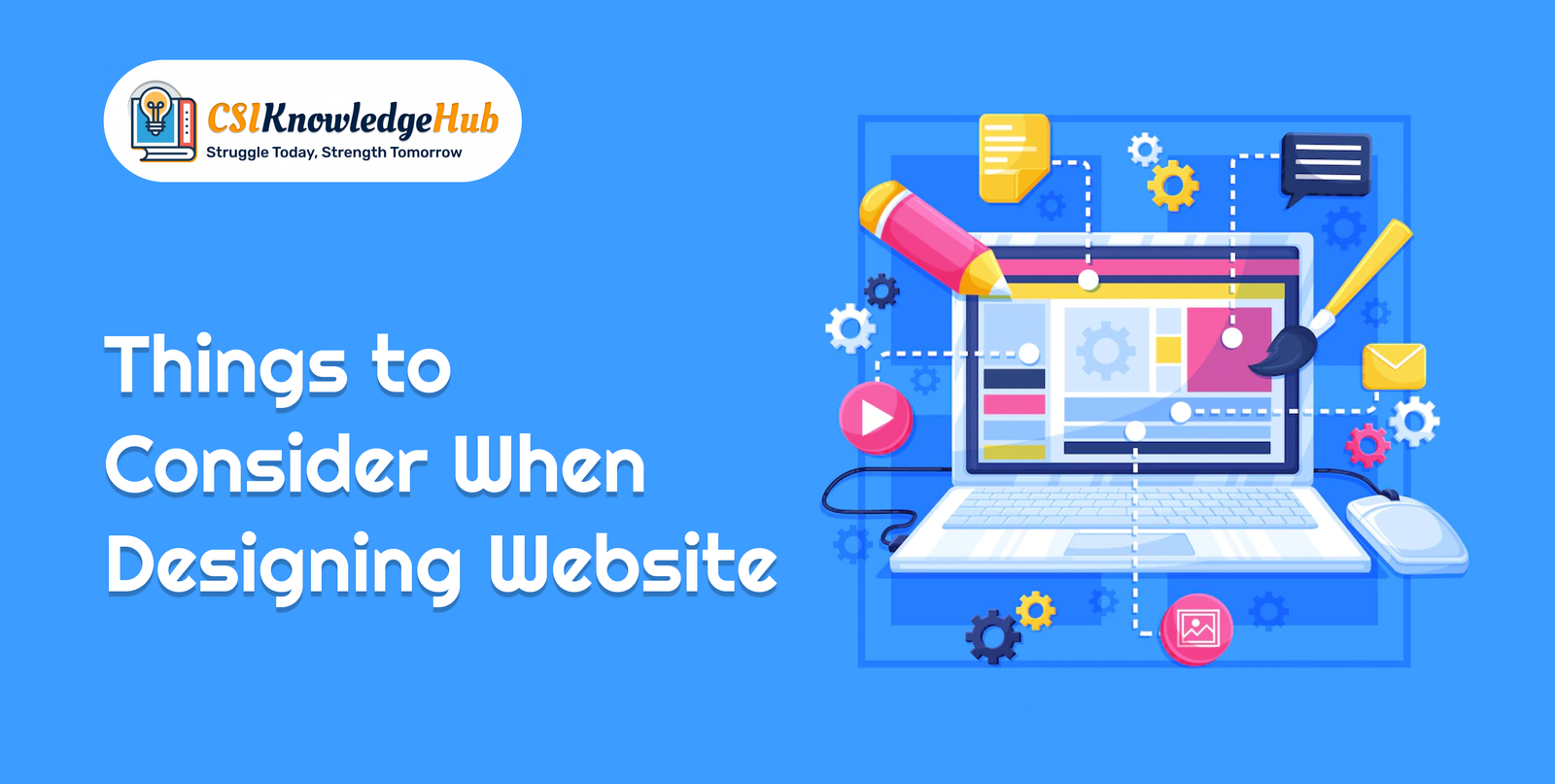Read Time 371 minutes
Website designing is a very vast field, but still not quite right. There are particular aspects of website design that many people don’t consider while developing their website. This can result in the creation of a haphazard website with no continuity and confusion to visitors. So, it’s important to understand the different aspects of web design. While there are many things to consider, let us look at some really basic considerations that should be made when designing a website.
Choose a Simple Font
When it comes to choosing fonts, do not go too overboard. Too many fonts can be confusing and make your website look cluttered. Stick with one or two fonts and use them sparingly so that they do not overpower the other elements on the page.
Use Consistent Color Schemes
Color is an important part of design, so make sure your website uses consistent color schemes throughout the site. It will help people find things they want more easily and provide a visual cue that lets them know what they are looking at.
There are many different color schemes available today; however, you should choose one which suits your business best. You should choose colors which match with those used in other parts of your business such as logos, signs etcetera.
Navigation
A well-designed website has a logical structure that helps the user navigate through the site easily. You should have a navigation bar so that users can easily navigate through your site and get to the right page or section that they want to see.The navigation should be simple, direct and not confusing. You can also put links at the bottom of each page so that users can click on them and go directly to another page or section of your website.
Put Your Content in the Right Place
Content should be organized by topic or section so users can easily navigate through your site without having to open multiple pages or navigate around using links on each page. It also helps if there are clear calls-to-action for users to click on so they know where they should click next when exploring your site.
Keywords
You need to add keywords in your headings and subheadings as well as in the content of each page. This will help people find what they are looking for easily on your site. If someone searches for something on Google, they will most likely come across your website if you have added appropriate keywords in it.
User Experience (UX)
User Experience is all about making sure that users enjoy their experience on your website and find it easy to use and understand your product or service. This includes everything from the look and feel of the interface, ease of navigation and even how easy it is for users to get in touch with you if needed!
Search Engine Optimization (SEO)
All of your content should be search engine friendly so that it can be found easily by people searching for you or your products or services on Google, Bing or Yahoo! Search Engines (this is especially important if you sell goods or services).
Domain Name
The domain name is what people will type into their browsers to access your website. The domain name should be short and memorable. You should also use hyphens and underscores, as well as numbers and symbols, in the domain name.
Hosting
Your website needs to be hosted somewhere where it can be accessed by visitors. There are many different ways of hosting a website, including using Canva or other tools for creating custom designs for websites.
Content Management System (CMS)
A Content Management System (CMS) is an application that lets you manage your content on a website—such as the pages that make up your actual site.
There are many different types of CMSs available online such as Blogger, WordPress, etc. They allow users to edit any type of text using simple tools like text editors and drag-and-drop functionality with preset templates for storing all kinds of content types including images, videos and documents, etc. You can also add new pages easily by just adding new templates in your WordPress blog.
Designing for Mobile Devices
Your website is not only going to be viewed on desktop computers but also on mobile devices such as smartphones and tablets. This means that if you want people to spend time on your site, then they will need to be able to access it easily. This can be achieved by having a responsive design which automatically adjusts itself depending on what device is being used (for example, changing font sizes, colors and layout). However, if this wasn’t done then users could end up having a difficult time interacting with your site because they would be trying too hard at times!
Conclusion
When designing a website, there are many things you should consider to ensure that your final product looks consistent, professional, and inviting. In this article, we covered some of the major points that you should consider before designing a website. These things will make your web design process easier and save some time that helps you to focus on other things. Follow these tips when designing your website to enable visitors to easily navigate through the site and find what they are looking for while enjoying the design.




